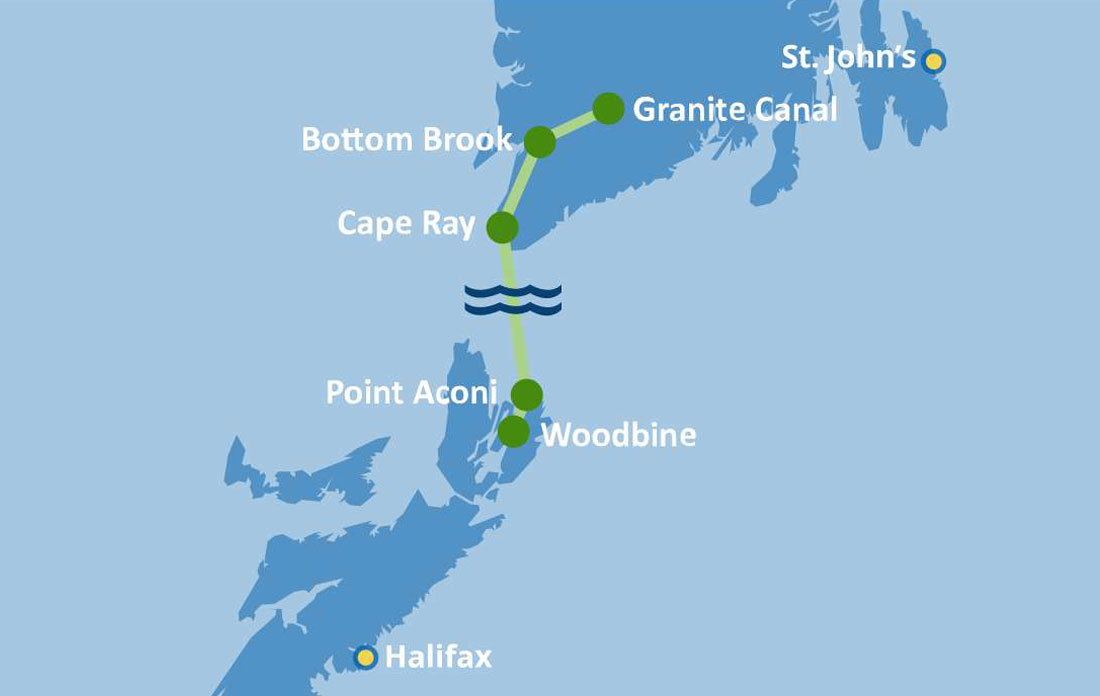POWERING A GREEN NOVA SCOTIA, TOGETHER
We all want a cleaner, greener future for our province—and that's why transitioning to renewable energy is our priority. It's a journey we've been on for over 15 years. Now, we're working towards 80% renewable energy by 2030 and phasing out coal. That means when you plug in your appliances, heat your home using electricity, or charge your electric vehicle, you’re plugging into a grid that's getting greener over time.
HYDRO POWER
Nova Scotia has a 100-year history of using small hydro developments on our rivers to generate power. The first hydro plant was installed in 1903 by mining interests on the Liscomb River in Guysborough County.

We own and operate 32 hydroelectric plants on 16 hydro river systems across Nova Scotia, totaling 400 MW of generation capacity. Many plants have been providing clean, renewable electricity to Nova Scotians for decades, with some established in the early 1900s, undergoing maintenance and upgrades to ensure they can continue to provide reliable electricity for many years to come.

The Maritime Link
The Maritime Link is a 170 kilometer subsea cable connection that was built between Cape Breton and Newfoundland and Labrador to enable the delivery of clean, reliable, renewable hydroelectricity to Nova Scotia. This will help Nova Scotia Power reach 80% renewable energy by 2030, and will contribute to better long-term price stability for electricity.

Wreck Cove
Wreck Cove is the largest hydroelectric plant in Nova Scotia with a generating capacity of 212 MW. Constructed from 1975-1978 south of the Cape Breton Highlands National Park, Wreck Cove collects drainage water from 216 square kilometres of the Cape Breton Highlands plateau to generate electricity. It’s also one of our more unique generating stations – the station’s powerhouse is located 275 feet underground, down a 620 metre access tunnel.
Wind Power
Nova Scotia’s growth in renewable electricity has been largely through the development of wind power.
There are now more than 300 commercial wind turbines generating electricity in Nova Scotia, making our province a national leader in wind energy as a percentage of total generation capacity.
We own and operate wind farms on Nuttby Mountain and Digby Neck. We have a minority stake in three wind farms in Nova Scotia - a 22 MW wind farm at Point Tupper operated by Renewable Energy Services Ltd., a 102 MW wind farm at South Canoe operated by Oxford Frozen Foods, and a 13.8 MW wind farm in Canso operated by Municipality of the District of Guysborough.
Many wind farms across Nova Scotia are owned by Independent Power Producers with contracts to sell their electricity back to us.
Biomass
Biomass is a renewable energy source used around the world. We operate a 60 megawatt biomass power plant in Port Hawkesbury, which supplies approximately 3% of the province’s electricity. It’s a facility that is helping us reach renewable energy requirements and provides a source of firm renewable energy that can back up intermittent wind generation. Plus, it’s a locally sourced fuel that helps displace imported coal.
Community Solar Garden

We’re learning how community solar can contribute to a greener Nova Scotia. We know our customers want a cleaner, greener future, and so do we. We're working towards 80% renewable energy by 2030. Solar is a great way to add more renewable energy to the grid, contributing to a greener future for the province.


